|
My personal study abroad experience with the program, UA in Asia: Innovation and Entrepreneurship in China and Vietnam, was one of personal growth within my own perspectives on the global, political, cultural and business levels. From traveling to Shanghai, Shenzhen, and Hong Kong, all the way down to Hanoi and Ho Chi Minh City, I was able to see the parallel between the “three freedoms” of a Communist government and the surrounding cultural and economic climates. After a 12-hour flight from Seattle to Shanghai, I arrived in China on Monday, May 6th. Immediately after arriving at the airport, I felt a since of “dislike” or “bias against American” sort-of vibe. I had to go to several different stations in customs before they could agree that I was the girl on my passport and personal identification card. I have to say, though, that I only felt that way in China, and within any customs center. On the following day, we had an introduction to China and Vietnam discussion. We discussed that both countries had a Communist government system. However, in China there is absolutely no freedom other than economic freedom. There is no political nor personal freedom. Any “critical thinking” or personal opinion is strictly prohibited. They only have one news source, so whatever the government tells them, that is all they know. Also, they have many strict “dos and don’ts” within their culture, from taboo numbers and colors. For instance, ‘8’ is the luckiest number, ‘6’ represents blessing and progress, and ‘4’ represents death and bad luck. White is considered the color of funerals and death, red represents vigor, luck and wealth, yellow means indecency, obscenity, and vulgarity, while green stands for something environmentally friendly. In addition, there are several expectations in the Chinese business culture. If you enter into a business meeting with Chinese, it is important that you have many copies of your business proposal. During the meeting or proposal, it is also important to stay calm, to not get too “worked up” and to contain your emotions. Composure, elegance, grace and “face” is expected. Some other interesting traits are that Chinese people enter meeting rooms in hierarchical order, Chinese counterparts always initiate the handshakes, they wear dark and conservative suits. Before closing a business deal, the key is always to build a strong relationship with them. Also, during a business meal, always wait to be seated and never leave an empty dish, but make sure to taste some of everything. With all of the societal norms, I was not surprised to hear the terms “brain-washed” and “robot” used so frequently by our tour guide Johnny. As we explored the city of Shanghai throughout the week, we saw many people on their day-to-day routines with cameras surrounding us everywhere. Although this system works for their society, it was sad to see such a lack of individualism, personality, joy and “spunk”. While in Shanghai, our first business visit was to Corning. The first thing we did was walk into the meeting room, all sit down at once, and then listen to their presentation. I noticed as the presentation was being given, that all three men were very monotoned. They kept a strict composure, and uniformity throughout the presentation. I almost thought it to be robotic. All of this was very reflective of the previous introductory discussion about Chinese norms. However, the men were extremely polite and kind, they were happy that we were there, and they all spoke English. This paralleled to me about how many Chinese admire America. They see it as “the beautiful country”, and us “the beautiful people”. I felt completely welcomed there. The presentation was specifically on the history of Corning with an emphasis on increasing automation within their company. The question, “In China, will workers outweigh job availability?” popped into my head. We toured the factory and saw the small fibers being strung out. Each clear product that we saw could technically be stretched out to 4,000 kilometers. This was mind-blowing to me! While in Shanghai, we also visited the Colgate Factory via high-speed train where they produced toothbrushes. The factory was focused on continuous improvement, global growth and automation. This location in Sanxiao was considered to be the largest manufacturing site, and in 2018, that plant produced 1.1 billion toothbrushes. There were statistics presented on labor as well. They used to have 6,000 employees working there, and labor was intensive at the time. In 2010, however, the labor cost increased, and they decreased the workers by 61% to 2,500 employees in 2018. They are working towards a more automated and digital manufacturing technological environment. Although they are moving towards having a “digital plant”, there are still questions on how long that will take, and how they will make it happen. Currently, some of their machines cannot communicate, and some cannot collect data, and it costs a lot of money to replace machinery. Therefore, they have a plethora of mixed technology, old and new. Although people are losing jobs, Colgate is making more money from increasing automation since labor costs are decreasing. Our group of students was able to tour the factory and see the “mixed machinery” for ourselves. There were indeed many old and new machines, with many different ranges of capabilities. For example, one machine we saw could do every single part of the manufacturing process. However, next to another, there was a line of women putting parts of the toothbrushes together, and that is all that they did all day long. After learning the ins and outs to this Colgate factory, the study abroad group, and Colgate’s employees discussed reverse innovation. We discussed the challenges of global companies. Some of those challenges are growth and inequality, rebalancing of power, and digital transformation, a common theme we were beginning to see. We discussed that the solution to these challenges was reverse innovation. Reverse Innovation includes developing to the developed instead of the other way around. With this, the lower class will begin to morph into the middle class, creating a bigger, more important market segment. With more customers, there is more data and more value. After Shanghai, we flew to Shenzhen, the innovation capital of the world. Our first stop was to ARTOP Group. ARTOP is a design innovation group with a plethora of customers, from Disney and Corning to Panasonic. In 1 year alone, they completed 2,000 different projects. One of the biggest points that I took away from this presentation was the importance of marketing for success, and how to market more specifically for specific products. Questions regarding the target market greatly come into play here. As we toured the building, I was really drawn to their design room. Since I have a degree in Apparel and Textiles: Fashion Retailing, I really enjoyed seeing the thought processes behind their products, from the different colors to the different textures of their swatches in the “swatch room”. After ARTOP Group, we visited ABP Electronics located in Shenzhen’s Robot Industrial Park. Established in 2004, ABP Electronics focuses on manufacturing of PCB products, assembly and testing. They are known for their competitive pricing, and their location actually did not move to the Robot Industrial Park until 2018. Some of their customers are airlines, medical equipment, automotive, etc. They are also known for their wonderful quality and customer service. The woman presenting wore a black, traditional and modest suit, was very put together and calm. We got to take a look at the assembly line, and it was definitely “out of my comfort zone”. I am not a science person, so seeing someone construct circuit boards was very eye-opening, and it certainly opened up more perspective for me. Also, I noticed that most workers here were women. One of the most mind-boggling and intriguing visits of the entire trip was seeing the electronics market in Shenzhen. Shenzhen’s Electronics Market takes up 70 million square feet of space, and you can find any piece or part of any electronic you can think of there. We were fortunate enough to get to visit Trouble Maker, a maker’s space located in this market. We got to take a look at all three of their different laboratories. The first laboratory consisted of beakers, drill presses, sanding tools, saw machines, welder’s masks, and wood pieces. We came to the conclusion that this laboratory focused on wood work. The second laboratory consisted of scales, infrared heaters, microwaves, ultrasonic cleaners, etc. This laboratory seemed to focus on circuit boards. Lastly, the third laboratory was small and hidden consisting of a Thunder Laser System cutting machine and a 3D printer, specifically the Maker Bot Replicator 2018. Most of their laboratory work is completed in the evenings because of the amazon sellers in the building. Since doing laboratory work is noisy, this keeps everyone in the building happy. While at Trouble Makers, we took a look at Shenzhen as a whole, how it was created and why it is so significant. There are three Free Trade Zones in Shenzhen. Also, everyone in Shenzhen is a foreigner. The average age is 32 years old. All people living there have a drive for success, they are agile and they want to explore options and see what all is “out there”. Shenzhen offers high quality, plentiful labor. Also, they value a more “creative” education. Every 4 seconds, a new start up is being registered in Shenzhen. As previously mentioned, Shenzhen is the Innovation Capital of the world. Taking on the start-up spirit of Shenzhen, we decided to split our study abroad group into 4 separate groups. We were all faced with the task of seeking out and purchasing the individual parts to make up 1 product in the electronics market. It was an opportunity to take on what so many individuals in Shenzhen experience day-to-day. The different product categories were a camera, an iPhone, a tablet and one other. My group was chosen as the “tablet” group. We sought out the “known” building for tablet parts and pieces. However, when we arrived this market had apparently moved to a different location without our knowledge, and no one would share about where it re-located. In all honesty, our whole 2-hour experience consisted of us searching for it, so we were not successful. However, this is a reality for many people in the market. Some markets will close in a short amount of time and will move locations, and most do not know where they moved to. Other groups experienced similar things to us, but it taught all of us several lessons, and grew our perspective. After an incredible experience in China, we met at the Century Plaza on our last day in Shenzhen to “wrap up China”. We discussed China’s history, their powerful advantages, place in the world, political climate and strategy. We talked about key people and dynasties before 2000 B.C., ancient history after 2000 B.C., Imperial China from 200 B.C. to 1912 and Modern China from 1912 to 2019. China is known to have 6 powerful advantages. Those advantages are their manufacturing ecosystem, low cost skilled labor, digital infrastructure, large domestic market, agile no legacy, and China Inc. We emphasized the importance and significance of “Made in China 2025” or the “Industrial Revolution 4.0”. Also, we emphasized the Belt and Road Strategy. There is a “railroad” from China across Asia, and it unlocks resources from other countries. After experiencing China’s ancient and traditional culture alongside its business ecosystem and political climate, I had several takeaways. With their controlling and power-hungry Communist government, China has a big stronghold on all of its people and habitants. I did not just see this through the everyday lives of the Chinese. It is hungry for growth, and sees that happening through increased automation in businesses. However, they will have to find a balance between that and keeping their habitants happy and controlled. I can see a lot of things going wrong if the number of people far outweigh the occupations available. They could potentially face a revolution, in my opinion. Also, I see the trade war and the Belt and Road Strategy to be very important characteristics of China. They want to have some sort of control of as many countries as possible, and this will cause more dislike and dissonance between countries and China. After China, we flew to Hanoi, Vietnam. In Hanoi, our study abroad group turned our focus onto cultural immersion. My favorite part of the cultural immersion was the bicycle tour of the Vietnam countryside. It was quite the experience! I loved seeing the farmers, fields, markets, cattle, water buffalos, etc. We stopped at several locations to hear about their way of life. We stopped and rode through a local market where all of the raw food was out on display in the open air, an environment that was very different from what I was used to. In addition, we stopped at someone’s ancestral home where the head of the family lives. They provided us with fresh tea and assorted fruits like mango, watermelon and pineapple. It was really nice to be able to cool off from the heat and humidity. After the tour, we got to go see the Ethnology Museum. In addition, we visited the Hanoi Hilton, where John McCain was held. I really enjoyed getting to see this because my grandfather was in the Vietnam War. It was very intriguing to see the propaganda and lies portraying America’s prisoners of war during this period. They conveyed their “stay” there to be something lovely. I only saw pictures of men eating around a table for “Christmas Dinner”, and our men playing basketball. The fact that they displayed this in such a way was shocking to me. We were able to see the cell life during that time, and the French guillotine that was used there as well. After experiencing that, we took electric cars around the Old Quarters to get a feel for our surrounding environment. There were many stores surrounding us everywhere, and the traffic was insane. The lake positioned at the center of the city was beautiful, and it was neat to be able to see the local women performing Thai Chi by this lake. To finish off this evening, I got to experience a Vietnamese massage. This was incredibly wonderful. To start, they gave me hot tea, and it followed with a 75-minute aroma massage. To finish, I got another cup of hot tea and some dried kiwi. It was delicious. I got the opportunity to really experience it all for myself, since I had heard that they were known for spa services previously. I really enjoyed this day! Before leaving Hanoi, we came together to discuss the political and social climate surrounding Vietnam in general. At first thought, the Vietnam War is what comes to mind when I think about this group of people. After all, it took around thirty years for them to recover from the war. What was surprising to me was to learn that this current generation in Vietnam does not care about the Vietnam War. To them, it is a part of the past. They do not show bias towards Americans or French. Therefore, there are several other things that define Vietnam’s climate. I learned that a lot of emphasis is placed on education in this culture. Professors are largely respected, and it’s really important to them to learn the English language. Parents yearn to send their children to college in The United States, The United Kingdom or Australia. “White face”, people who are white in color, is something seen as highly admirable. Their infrastructure and economy is solely based on their crop production. They produce fruit and export to the southern province of China. China happens to have a large economic influence on Vietnam. For example, if China one day decided to “shut their gates”, all of Vietnam’s fruit would spoil and they would lose a plethora of money. When it comes to the political climate, it is not a peaceful one. Unlike China, things in Vietnam ends in violence, not peace. There are many protests, when things do not get peacefully resolved. People in this country are not satisfied with the government. However, like China, this is a Communist government, so the only way to change the political climate would be to start a war. To wrap up Hanoi, and immerse in the North Vietnamese culture, we took a cooking class. We started off running by a traditional market where we shopped for local produce. There was fresh produce, meats and seafood. However, I was taken back by the lack of air conditioning and flies. It is safe to say that this type of condition would not be approved by The US Food and Drug Administration. After buying local produce, we had the opportunity to participate in making homemade spring rolls, chopped up vegetables for some Vietnamese classic dishes, and made meat balls. After they cooked, we enjoyed the delicious food outside accompanied by a view of the river. Following Hanoi, we traveled to Ho Chi Minh City, earlier in time known as Saigon, in South Vietnam. We stayed in the Liberty Central Hotel. My first impression was that it was elaborately beautiful, plush and fancy. We were greeted with freshly squeezed mango juice before exploring the hotel’s amenities. We found that there was a restaurant downstairs, a movie theatre and an incredible rooftop “Sky Bar” at the top. This made me extremely excited for the days ahead. To start off our exploration of Ho Chi Minh City we visited Jabil in the Saigon High-Tech Park. Jabil was a manufacturing facility, with the company being a twenty-billion-dollar business. This goes to show that they have a lot of buying power. They are one of the top three manufacturing companies in the world. Some of their current customers are Keurig, ADTRAN, Display Data, SES, Zebra Printer, with tenants including Intel, Samsung, Ingenico and Motorola. They produce millions of product a day, including 50,000 Keurigs a day. Their business unit model consists of making each customer a new “unit”, keeping Jabil “small” and enabling novel approaches. They believe in digitalization, visualization and optimization known as “Factory 4.0.” Jabil sees less employees as an investment. In the midst of learning about this company, we learned about Ho Chi Minh City has a business hub as well. Ho Chi Minh City is known as the “Shanghai of Vietnam”. Vietnam is a vastly developing country. They are where China was economically in the year 2000. With the help of President Trump, they continue to expand and grow. We also got to visit the Saigon Hi-Tech Park Incubation Center. This is a government-run center that is similar to a “maker” space. It is all about innovation and creating startups. Their moto is “collaborate, design, create, innovate”. After this we got to visit the Saigon Hi-Tech Park Training Center. This center is all about bringing education to its customer. They offer seminars, skill tests for workers and engineers, training courses for education, robot technology training and sponsoring for scholarships. The next stop in Saigon was at the Cu Chi Tunnels. Since my grandfather fought in the Vietnam War, anything in relation was on the top of my to-do list. It was consistently interesting and frustrating to see the perspective of the Vietnamese during this time. At the Cu Chi Tunnels we were able to see the underground “hideaways” and hidden traps used against the American troops. We even got to crawl through one of the tunnels. It goes to show how tiny the Vietcong were. Following this was the Vietnam War Museum. This further continued my frustrated feelings stemming from their perspective. The Vietnamese only showed injured Vietnamese innocents, completely ignoring the fact that they committed the exact same things to Americans. The thing portrayed that frustrated me the most, was that only the Vietnamese were impacted by Agent Orange. This was hard to see because my grandfather had cancer that ended up causing his death, and it is predicted that this was caused by Agent Orange. In fact, my grandmother gets compensated because of this monthly. One of the last experiences here was visiting the temporary location of Fulbright University. This was incredible. It was so neat to see this type of revolutionary education that is turning traditional education on its head. They participate in active learning, and use a “flipped classroom” method where students watch lectures at home and then work on problems in class. They believe in co-design where students help create their own curriculum, and they sincerely care about the students. In fact, their headmaster said, “We look for students, not students with test scores.” I cannot wait to see how this University grows in the future.
All-in-all, this was such an eye-opening experience. It was incredibly intriguing to experience the climate and cultures of two communist countries, yet see first-hand the differences between them. After seeing the robotic lives of the freedom-less Chinese shackled within their strict government, it was shocking to see the difference in Vietnam. Although Vietnam is also a Communist country, there seemed to be a presence of personal freedom. Critical thinking and free thinking is much more accepted. In regards to the business climate, there are many local businesses and street vendors. Also, Vietnam would rather do business with The United States and Japan than with China. Since most of Vietnam’s profits are from agriculture, China still has a significant hold over them. This continues to raise tensions between the two countries. Although these were very noticeable differences, there was a common theme between them. They both are looking to the future, trying to increase technology and increase automation. Both see automation as a positive, and neither act like they are worried about the consequences of rising unemployment rates.
3 Comments
The study abroad faculty-led program that I chose took us around China and Vietnam. We started in Shanghai, China where we learned about the cultural aspects of China and its people. We also visited one of Colgate’s factories: Colgate Sanxiao in Yangzhou City. Then, we took a plane to Shenzhen, China. We spent most of that whole day traveling to Shenzhen, and the program allowed us to have the rest of the day to explore the city. However, some of us decided that it would be really cool to travel to Hong Kong instead, which was extremely close to where we were staying. None of us had been to Hong Kong before and we wanted to go on the Peak Tram and the Star Ferry, so a couple of us ended up going. We left from the airport while the others went to the hotel. We took a bus to the border where we went through customs. The ride was long, and we had to go through a long tunnel that seemed endless. However, we made it through the neverending bus ride. Once we got through Chinese customs and got our Hong Kong visas, we transferred to another bus that took us to Causeway Bay with the help of a kind English speaking Chinese businessman named George. We traveled through the countryside on this bus. Seeing all the vegetation and mountains was worth this the second two hour bus ride. This bus dropped us in the center of where we wanted to go, but we were nowhere near the peak tram. We ended up figuring out with the help of a kind couple about how to get closer to where we wanted by getting on a trolley. Once on the trolley, we met an amazingly kind lady named, Naz. She stepped off the trolley with us and took us directly to the Peak Tram Station which was an incredibly kind gesture to complete strangers. The Peak Tram was unbelievable. It went up the mountain almost completely vertical. You had to sit down to keep from basically sliding out the back of the tram. We looked out over the city, and the view was breathtaking. Once at the top, we viewed the top of the city from a lookout before we had to go back down to not miss the last metro back to China.
We didn’t have enough time to go on the Star Ferry that night, which has been named by the National Geographic as one of 50 ‘places of a lifetime’. It has carried passengers from Hong Kong Island to the Kowloon Peninsula since 1888. However, we ended up going back to Hong Kong again with another group to go on the Star Ferry in between one of our classes and dinner. Going on the Star Ferry was kind of like my starstruck moment because I had seen the Star Ferry in a lot of late 1900s and early 2000s movies, but it was so surreal to actually go on something that you’d think that you only see in the movies. In addition to the incredible day, we got to go on the world’s longest outdoor escalator system that was 800 meters long consisting of a chain of moving stairs and walkways in the Central business district of Hong Kong. Traveling away from our study abroad location in China to Hong Kong was so worth the extra six hours of traveling on plane, bus, train, metro, trolley, and tram. It was interesting to visit a place in Asia that reminded me so much of being back in the United States. Most people spoke English, which was an anomaly from the past four days where almost no one spoke English. Some signage was even strictly in English. To the group of us traveling, it felt more westernized than we expected. Hong Kong was truly incredible, and everything I dreamed it would be. Everyone in the program had just arrived in our first destination, Shanghai, on our study abroad program the day before. The time difference caused a lot of us to wake up early. We had a lot of time to explore before our first classroom session, so two of us decided to explore around our hotel. We stumbled upon the Shanghai Civilized Park that was nearby. Historically, the park that we discovered was located in a part of Shanghai that was the designated area for stateless refugees. The area was bordered on the west by Gongping Road, on the east by Tongbei Road, on the south by Huimin Road, and on the north by Zhoujiazui Road. During the time of Nazi persecution from 1937 to 1941, thousands of Jews fled to Shanghai. The Japanese occupation authorities, at that time, labeled them as “stateless refugees”. They set up this area that was designated for them as a means to restrict their residence and business. The park was a standing reminder of that past. In the park, there were four groups of people doing different types of tai chi and listening to different recordings while doing it. Some recordings were of just instrumental music. Others appeared to be instrumental music with a voice instructing everyone in Chinese, but we couldn’t tell because we can’t understand Chinese. It was amazing to see all these people so early in the morning knowing exactly what to do without instructions, moving together as one, and so disciplined. It was so incredible. We both had taken some tai chi classes back in the states, so we decided to try and join in. We stood next to a group of women that looked nice. Compared to them, the little knowledge that we had was very insufficient, and we definitely were not as skilled as they were. I think that they sensed this because they slowed down in an effort to help us and non-verbally instructed us to try and copy them. It was one of the coolest experiences of my life. I was humbled that these ladies decided to help us. I can’t put into words how incredible it was to gather in a park with all these people who just get together in the morning. They don’t really speak much to each other. They just do tai chi as a community. It, also, amazed me about how much can be said through no words being exchanged, just movements. That experience will always hold a special place in my heart. Even though I’ll never see those ladies again or ever have the chance to actually speak to them, the experience showed me the beauty of community and how those ladies just accepted us into theirs even though we were complete strangers. When the music had finished, we thanked the kind ladies and went to head back to hotel. On our way back, I was so excited for the day and happy that I unconsciously started sort of dancing while walking back to the hotel. My friend told me to turn around in the middle of a twirl, and she snapped this picture. I think this is probably one of my favorite photos from my entire study abroad trip. It’s not just a picture of me in the streets of Shanghai. To me, it symbolizes my first cultural experience abroad. The first time I realized how beautiful and special community is, and how beautiful small moments in time like these are. A year ago when I was deciding where I wanted to attend college, my school counselor laid out a list of common deciding factors that were supposed to help me decide. There were the obvious ones like the location of the university and its surrounding atmosphere, the types of majors the university has, and the overall campus life. Then, there was study abroad programs that a university offers.
Study abroad? I wasn’t interested. Definitely not a deciding factor for me. I’ll be just fine studying at the university I choose. That was that, and I was okay with it until the study abroad program: UA in Asia: Innovation and Entrepreneurship in Vietnam (Hanoi and Ho Chi Minh City) and China (Shanghai and Shenzhen). Significance: I am part Chinese and Vietnamese. My mother’s family immigrated from Vietnam during the end of the Vietnam War. I have never been to either country, but I have always had a strong tie to the culture through my family’s oriental traditions. We celebrate Chinese New Year. I wear the traditional Vietnamese dress on special occasions. I’ve grown up being taught how to prepare certain Asian dishes, just as my mother did, but I’ve never been to Asia. Wow! Not only would I get to learn about something that I’m interested in, but I’d get to do it in the countries that I have familial ties to. And it’s during May Interim, so it won’t interfere with my degree plan or any summer plans. But it was a pipe dream, never in a million years would I think that everything would fall perfectly into place. That right 38 hours after finishing my last final of freshman year that I’d be on a plane to Shanghai of all places to meet up with my professor and 11 other students. Since I’m on a plane almost to Shanghai, shouldn’t I be able to answer: how does one prepare to visit a country for the first time that their mother immigrated from when she was ten years younger than you are now? Yes, but I can’t answer it. I have packed and repacked and repacked again just to make sure that I have everything, and I do. In terms of tangible things, I am prepared. Though emotionally, I am not prepared, and I don’t know how to be. Everything just seems so surreal. So many thoughts are running through my head. It’s really scary going overseas to countries that are very unlike the United States. What if I forgot something that I didn’t think I’d need until I need it? What if I get lost? Me and running around lost do not make a good combo. With all the nervous thoughts swarming my brain, my level of excitement is actually increasing exponentially outweighing everything else. I am excited to experience the culture, taste the foods, visit the sites, and learn about the differences between Asia and America. And, man, oh man is it gonna be so amazing! No matter what happens. |

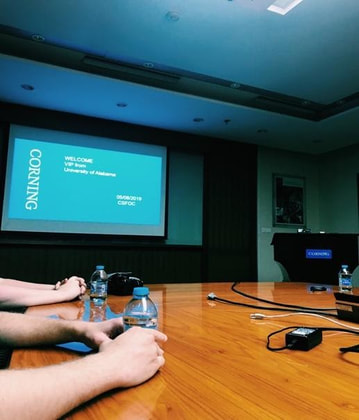
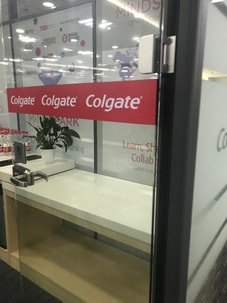
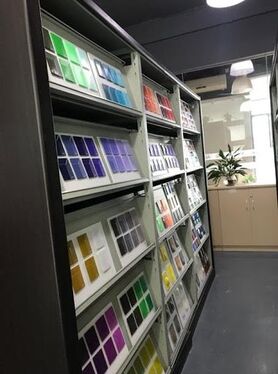
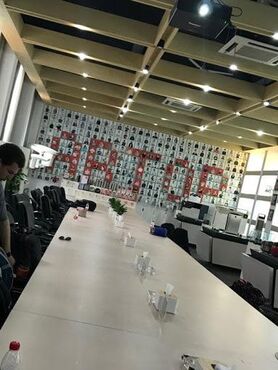
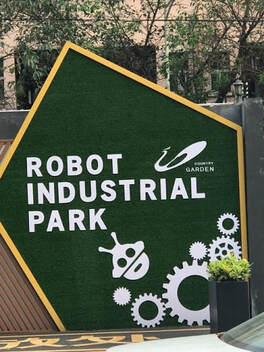
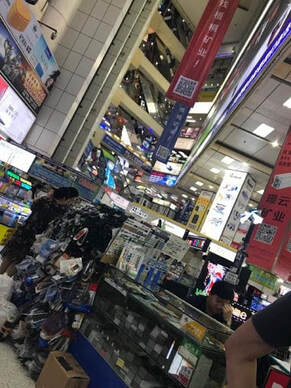
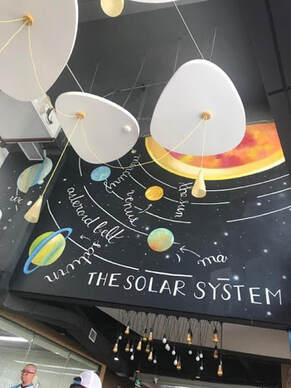

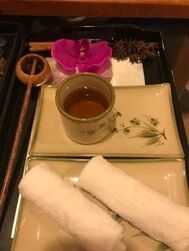
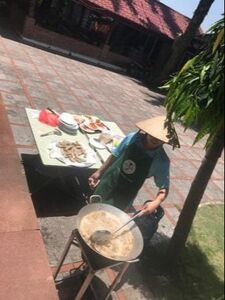
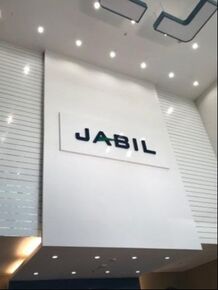
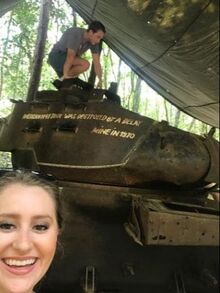
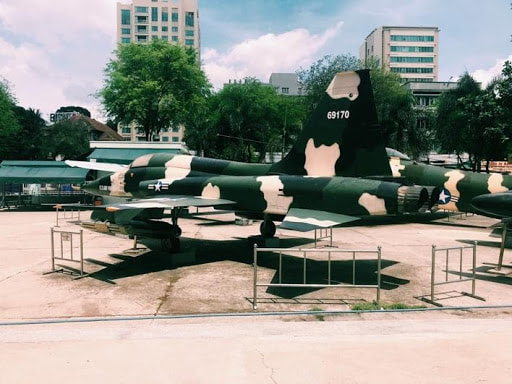
 RSS Feed
RSS Feed
